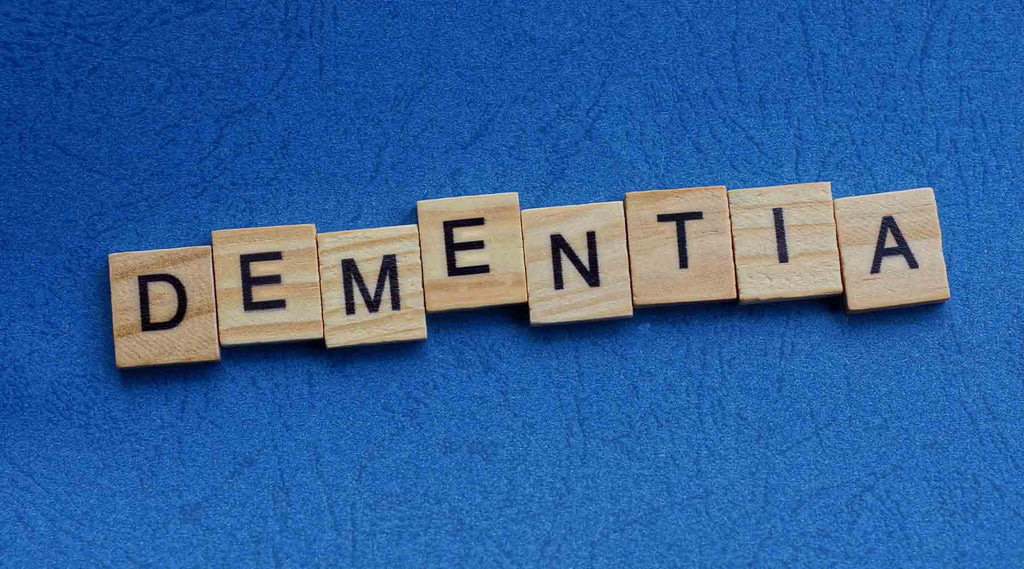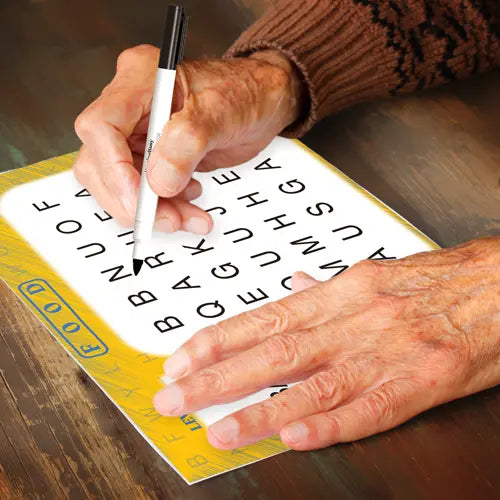
The term “dementia” is often used to describe any disease that affects a person’s memory or mental abilities, but in fact there are several distinct types of dementia, each with different characteristics.
In 2013 the American Psychiatric Association published the latest edition of the Diagnostic and Statistical Manual of Mental Disorders (DSM-5), which among other things, provides the diagnostic criteria for different types of demen tia. It is used to diagnose and classify mental disorders, including dementia, by the medical community in much of the world.
According to the new Manual, a diagnosis of dementia requires that there be evidence of a significant cognitive decline from the previous level of function in at least one cognitive domain (see our article "Dementia Cognitive Domains") and the decline must be severe enough to interfere with the person’s activities of daily living.
COGNITIVE DOMAINS
A diagnosis of dementia requires significant decline in at least one of these cognitive domains:
- Complex attention
- Executive function
- Learning and Memory
- Language
- Perceptual-motor
- Social cognition
More information at "Dementia Cognitive Domains"
While there are many more types of dementia, Alzheimer’s Disease, Vascular Dementia, Lewy Body Dementia and Frontotemporal Dementia make up some 80 to 90 percent of all cases. It is important to identify the type of dementia (or dementias because a person can have more than one type) that a person has because it affects their treatment and care options.
Here is a brief description of each of the four major types of dementia and some of their symptoms.
ALZHEIMER’S DISEASE (AD)
The commonest type of dementia (70% to 80% of all cases) characterized by memory loss, confusion, difficulty communicating, paranoia and anxiousness.
Progression
- Onset of the disease is “insidious”, meaning that it is so gradual that it is well established before becoming apparent.
- The disease progresses gradually.
Alzheimer's Symptoms Dementia
- Memory loss and impaired learning ability early in the disease
- Language and visuospatial (the ability to perceive objects and the spatial relationship between them) deficits in mid to late stages
Possible Features of Alzheimer's Dementia
- Depression and apathy in early stages
- Agitation, wandering in mid to late stages
- Gait issues, difficulty swallowing, seizures
Other
- Often occurs with vascular dementia
VASCULAR DEMENTIA (VAD)
The second most common form of dementia, vascular dementia is also known as “multi-infarct dementia” or “post-stroke dementia” because it is caused by bleeding within the brain. It is characterized by impaired judgement, loss of the ability to plan and loss of motivation.
Progression
- Onset can vary depending on location of blood flow disruption but is often sudden.
- Decline is often in steps
Symptoms
- Loss in executive and complex attention domains, memory loss is secondary and is sometimes spared
Possible Features
- Personality and mood changes
- Parkinson-like symptoms but insufficient for Parkinson’s diagnosis
- Slow, gradual progression due to small vessel disease
- Depression
Other
- Often occurs along with Alzheimer’s Disease and/or Lewy Body Dementia
LEWY BODY DEMENTIA DISEASE (DLB)
Caused by the presence of abnormal Lewy body proteins in nerve cells, Lewy Dementia Disease is the third most common type of dementia. It is characterized by sleep problems, hallucinations, memory loss and frequent changes in alertness.
Progression
- Onset is “insidious”, meaning that it is so gradual that it is well established before becoming apparent.
- The disease progresses gradually.
Symptoms
- Early changes in complex attention and executive domains
- Recurrent, detailed hallucinations early in the disease
- Spontaneous Parkinson-like symptoms shortly after, or concurrent with cognitive symptoms
Possible Features
- REM sleep disorder can be an early sign
- Severe sensitivity to antipsychotic drugs (neuroleptics)
- Falls and sudden loss of consciousness
- Problems with the autonomic nervous system (which controls blood pressure, heart rate, etc.)
Other
- Frequently occurs with Alzheimer’s Disease and/or Vascular Dementia
FRONTOTEMPORAL DEMENTIA (FTD)
Much less common, but thought to be the fourth most prevalent type of dementia, frontotemporal dementia has more behavioral, emotional and language symptoms than memory and learning losses. In fact, memory is often spared in this type of dementia. There are several forms of the disease (behavioral and language being the most common), but they are all caused by atrophy or shrinking of the frontotemporal lobes. It is often misdiagnosed as Alzheimer's Disease or a psychiatric problem.
Progression
- Onset is “insidious”, meaning that it is so gradual that it is well established before becoming apparent.
- The disease progresses gradually.
Symptoms
Two variants of the disease, both are often present:
Behavioral variant
- Changes in social cognition, language and/or executive domains
- Behavioral symptoms including disinhibition, lack of empathy, apathy, compulsive behavior and eating inappropriate objects
Language variant
- Loss in language domain including word memory, speech, word finding and comprehension and grammar
Possible Features
- Antipsychotic drugs may cause movement disorders
- May exist along with other neurological conditions
- May have visual hallucinations
- Approximately 75% of cases occur between the ages of 56 and 65
Other
- Sometimes mistaken for depression, schizophrenia or bipolar disorder




